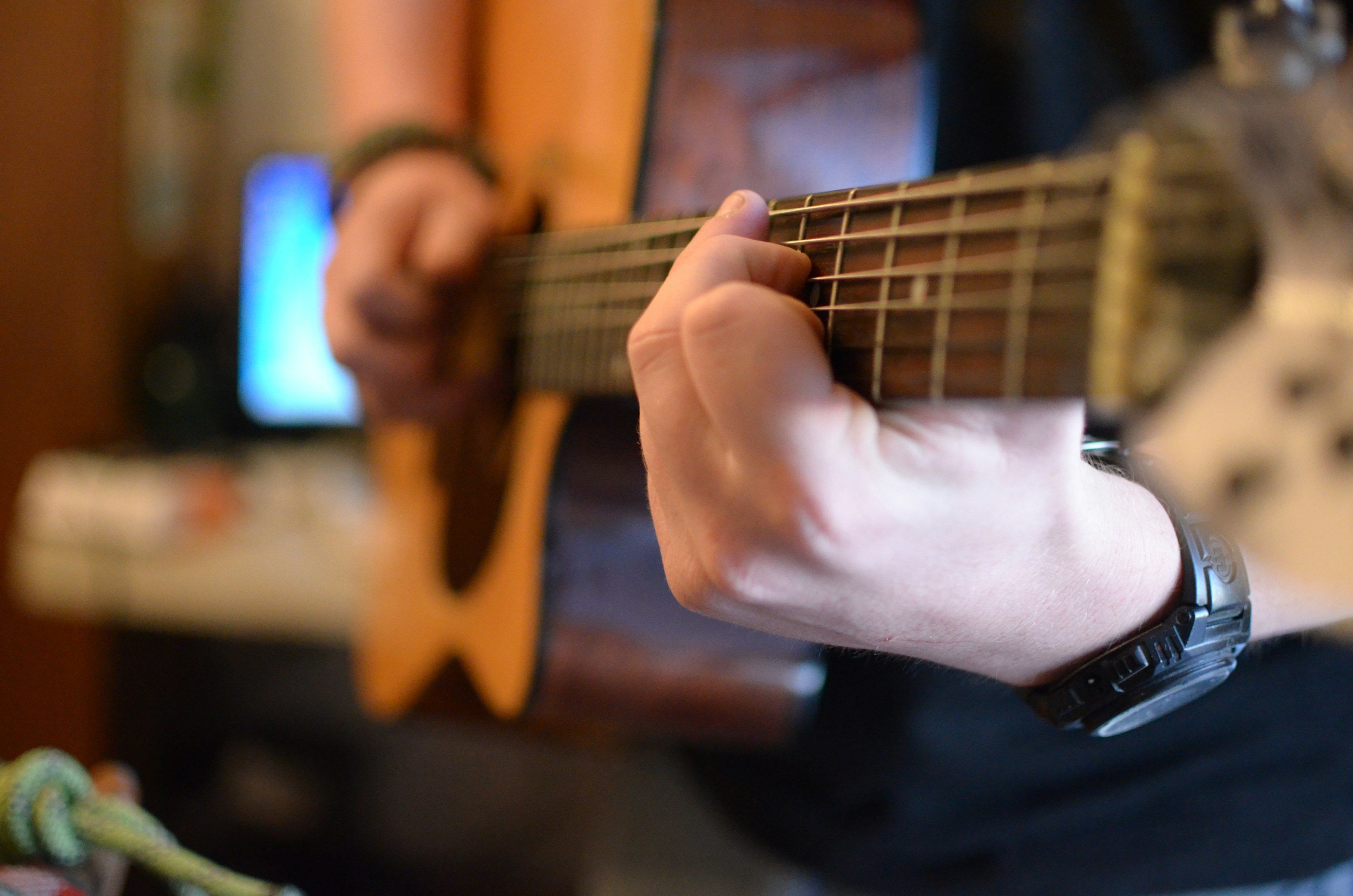Speeding Up Your Guitar Learning: What to Do When You Feel Stuck
By Ben Makes Music
We’ve all been there: you’ve been practicing guitar for a while, and yet, it feels like you’re not progressing as quickly as you’d hoped. Maybe your fingers are still stiff when you play, or that tricky chord change just won’t click. It’s frustrating, right? But don’t worry! The fact that you’re feeling stuck is actually a good sign—it means you’re learning. And the good news is, there are ways to speed up your progress. Let’s break it down.
1. Set Clear, Achievable Goals
One of the quickest ways to feel progress is to set goals. But don’t just say, “I want to get better.” Get specific. Instead of aiming to “master guitar,” try “learn to play the G chord smoothly” or “be able to play a simple song by the end of the month.”
Why does this work? Clear goals give you a sense of purpose and direction. When you reach a goal, no matter how small, you feel accomplished. And that little bit of success will keep you motivated to keep going.
2. Slow Down to Speed Up
This might sound counterintuitive, but slowing down can actually speed up your learning. If you’re trying to play a song or chord progression, start by playing it slowly and correctly. Focus on getting every note right, every movement smooth. As you get more comfortable, you can gradually increase the speed.
Remember, quality over quantity. Playing fast before you’ve nailed the fundamentals often leads to sloppy playing. Master it slowly, and you’ll play faster naturally.
3. Use the “Chunking” Technique
Have you ever tried to learn a difficult song or piece of music and felt overwhelmed? That’s because you’re trying to take it all in at once. Instead of looking at the song as one huge mountain to climb, break it down into smaller chunks.
For example, if a song has three sections, practice each one separately. Once you’re comfortable with each chunk, you can start putting them together. This technique will help you make faster progress and prevent you from feeling lost in a sea of notes and chords.
4. Practice Consistently (Even for Just 10 Minutes a Day)
It’s not about how long you practice, it’s about how often. Practicing every day, even if it’s just for 10–15 minutes, is much more effective than practicing for hours once a week. Consistency is key.
When you practice daily, you build muscle memory and develop a sense of rhythm and timing. Plus, short, focused practice sessions are more likely to keep you engaged and motivated, which ultimately leads to faster progress.
5. Focus on Technique Before Speed
When you’re learning something new, especially if it’s a fast song or complicated lick, it’s tempting to focus on speed. But here’s the thing—speed comes naturally when you nail your technique first.
Focus on:
• Finger placement: Are your fingers pressing the strings cleanly? Is your thumb in the right position?
• Posture: Is your back straight? Are your arms relaxed?
• Strumming or picking technique: Are your motions smooth and controlled?
Once you’ve got the technique down, speed will follow. Think of it like building a house—strong foundations lead to better results.
6. Play Along With Music or Backing Tracks
One of the most fun ways to speed up your learning is to play along with music. It’s motivating, and it’s a great way to practice timing, rhythm, and chord changes in a real-world context. Choose songs that match your skill level, or try backing tracks that allow you to practice improvising or playing along to a beat.
Playing with music helps you feel like a real musician, and it pushes you to practice at a faster pace than you might on your own.
7. Record Yourself (And Listen Back)
Recording yourself might feel a little awkward at first, but it’s one of the most effective ways to notice areas for improvement. When you listen back, you’ll hear things that you might not notice while you’re actually playing. It could be timing issues, string muting, or even little mistakes that go unnoticed.
This gives you a fresh perspective on your playing, and you’ll be able to spot things you need to work on to improve faster.
8. Don’t Be Afraid to Ask for Help
Sometimes, you feel stuck because you’re trying to figure something out on your own. And that’s okay! But here’s the thing: you don’t have to do it alone. If you’re feeling frustrated, don’t hesitate to ask for help.
Whether it’s a teacher, a fellow guitarist, or even an online guitar community, getting feedback or advice can help you break through your barriers. A fresh perspective might just be the push you need to make faster progress.
9. Change Up Your Routine
If you’ve been practicing the same way for a while and feel like you’re not moving forward, it might be time for a change. Try something new! Experiment with different genres, play a song in a style you’re not used to, or try learning a completely different technique.
Sometimes, the best way to speed up progress is to keep things exciting and fresh. This will keep your brain engaged and open to new learning opportunities.
10. Be Patient with Yourself
The most important piece of advice I can give you is this: Be patient. Speeding up your learning doesn’t mean rushing through it. Learning guitar is a marathon, not a sprint.
Progress might feel slow at times, but every small step forward is still progress. Celebrate those steps and trust that with consistent practice and a positive mindset, you’ll get to where you want to be.
In Conclusion
Speeding up your guitar learning takes time, strategy, and patience. By setting clear goals, slowing down to focus on technique, practicing consistently, and mixing up your routine, you’ll see faster progress than you might expect. Remember, every guitarist feels stuck at some point, but it’s the ones who keep going that see the greatest rewards.
FAQs About Guitar Lessons with Ben Makes Music
What is Ben Makes Music?
Ben Makes Music provides guitar lessons for all levels across Essex, including Rayleigh, Hockley, Hullbridge, and surrounding areas.
What types of guitar lessons are available?
Lessons cover a range of styles, including rock, blues, classical, and more. Whether you’re a beginner or advanced player, there’s a lesson for you!
How do I book a lesson?
Booking a lesson is simple! Contact us online or by phone to arrange your guitar lessons in Essex, including Rayleigh, Hockley, Hullbridge, and beyond.
Are online lessons available?
Yes! High-quality online guitar lessons are available for students in Essex and beyond.
Are the lessons suitable for beginners?
Absolutely! Whether you're in Hockley, Leigh-on-Sea, or elsewhere, step-by-step guidance is provided to help you get started on your guitar journey.
Where can I take lessons?
Guitar lessons are available in the following locations across Essex:
Guitar Lessons in Rayleigh
Guitar Lessons in Hockley
Guitar Lessons in Hullbridge
Guitar Lessons in Wickford
Guitar Lessons in South Woodham Ferrers
Guitar Lessons in Leigh-on-Sea
Guitar Lessons in Eastwood
Guitar Lessons in Benfleet
Guitar Lessons in Basildon
Guitar Lessons in Thundersley
Guitar Lessons in Rochford
Why choose Ben Makes Music?
Each lesson is personalised to meet your goals, ensuring fast progress and a fun, engaging learning experience.
Are guitar lessons worth it?
Definitely! Personalised feedback helps you progress faster than relying on free resources.
Can I try a lesson first?
Yes! Book a trial lesson to see if the approach works for you before committing.
Let’s get started on your guitar journey!












